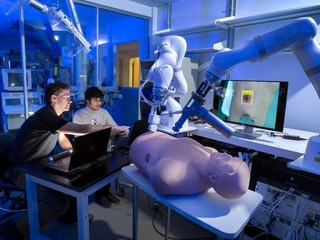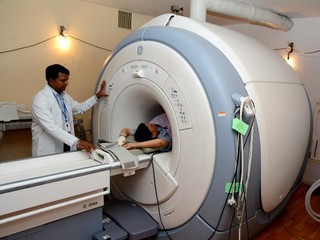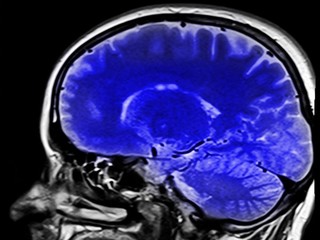Capex turns passive visitors into engaged buyers
Converting online looky-loos into customers
Read more...
Healthcare is well known as being a space that moves slowly. Given the amount of money pouring into it every year, which amounts to 18 percent of GDP in the United States, that’s perhaps not surprising. There’s also the fact that change can have dire, if not lethal, consequences for patients. It’s good to take things slow when actual lives are at stake.
Yet in recent years it seems like technology is finally catching up with healthcare, and it’s changing things more rapidly than anyone could have ever imagined. That’s true for the patients, who now have increased access to wearables and to platforms like telemedicine, allowing them to have more control over their health and to access their care from anywhere. The role of the doctor, meanwhile, is also changing thanks to artificial intelligence and machine learning, which are meant to help process the more mundane, repetitive tasks to allow physicians to practice at the top of their skills and licensure.
So far though, physicians aren’t so willing to embrace this new technology: a survey from Medscape last year found that, out of 1,500 doctors around the world, only 20 percent of physicians said AI has changed the way they practice medicine, and 44 percent think AI will be as good or better than human physicians at diagnostic tasks.
The numbers in that survey weren’t all bad, with almost 70 percent of doctors saying that they believe AI-powered software will allow them to spend more time on other important tasks, but there’s obviously still a long way to go before physicians truly embrace, and trust, this new technology.
Emerging AI solutions in healthcare
Healthcare technology can be a pretty broad term, encompassing simple platforms, like ones that allow doctors to text with their patients, for example, to being so advanced that there are robots assisting in surgery. What I want to focus on are the high-end technologies, including artificial intelligence, machine learning and robotics, all of which are meant to aid the physician in diagnostics and surgical procedures.
For example, robots are getting smarter now to perform more and more functions that are currently being done by physicians. In some cases, the robots can actually guide themselves through procedures, which means that the physician no longer has to do all of the heavy lifting. The same thing is happening in imaging, where AI is helping with diagnosis, but also in the MR and CT machines themselves, allowing for images to be processed and analyzed faster. Artificial intelligence can even look at older images and fill in the gaps that the older technology might have missed.
Those are the advancements we are seeing already. The really interesting use case for technologies like artificial intelligence and machine learning is when they are able to look at different disease states and determine progression and tissue categorization. Once that technology is here, it will help the physicians to know where the disease state is and how it’s progressing in real-time, so they can make a decision on treatment or delay it based on this specific individual or this subset of the population. This is the “Holy Grail” for healthcare technology, and it’s probably only five to 10 years away.
Enhancing, not replacing, the doctor
The advancement in technology that leads to a really important question: when AI gets to that point, what becomes of the doctor’s role?
Surveys show that most doctors don’t believe they will be replaced by technology, with 68 percent of general practitioners in the United Kingdom, for example, saying they don’t believe that AI will be able to do diagnosis for them, and 94 percent saying it can’t replace empathic care. Learned empathy may take a while, if at all. But AI is making significant inroads, particularly in some disciplines. Take a radiologist or a pathologist for example: right now, they don’t treat patients, so they don’t have any real liability for the outcome. A radiologist can say, ‘This is a patient’s scan’ and then give it to either the surgeon, or the general practitioner, to diagnose or treat, and they are the ones who become responsible for what happens next, and what ultimately happens to that patient. That makes it easier to take part of a radiologist’s job and automate it as compared to a surgeon.
It also comes down to how comfortable a doctor is with technology, and it’s perhaps not too surprising that that often comes down to demographics, specifically age. For those who are used to doing things a certain way, it can be very hard to change behaviors; there are a lot of people who are in their 50s and 60s who never adopted robotic surgeries because they were really good with doing manual procedures, but then the new guys, who were going through the fellowships and residencies, learned these new skills. In a way, this older demographic is being left behind as healthcare rapidly changes.
However, there’s going to be a place for those doctors, even if they aren’t able to keep up with the new technology. They have a lot of experience, so perhaps they become advisors to these AI skill sets, where they can look at these complicated procedures, so they still become an element in providing necessary information. One of the big issues with healthcare is that each procedure is so unique, so creating an AI tool across disciplines is not easy. We need to create one for urology, one for this application, and another one for another application, and these doctors, who are experts in their field, can become leaders in providing the information for the tools to become efficient over the next five or 10 years.
Ultimately, even as newer technologies take a larger role in healthcare, there will always be a place for a human being in the space.
What will be the role of the doctor in 20 years?
So what will a doctor’s job actually look like a couple of decades from now? Most likely their job will involve them working alongside robots and artificial intelligence platforms. So, in spite of the fact that the robot is performing a procedure, a physician would still need to be there to step in if something goes wrong. The technology will make their lives easier, without totally making them irrelevant.
At Promaxo, our ultimate goal is to create an in-office, portable and AI-based MRI machine with a much lower magnetic field than a typical MRI machine, thus allowing us to also incorporate surgical robotics. We still need a doctor though to actually perform the procedure; they will be provided with information on the image itself, on the robotics pieces themselves.
I see the role of the doctor as managing all these technologies, making the call on what needs to be done and where. In my perfect world, a doctor would be a conductor in an orchestra: they don't need to perform all the musical instruments, they masterfully choreograph the procedure.
(Image source: techhive.com)

Dr. Amit Vohra is a serial entrepreneur, business strategist and advisor to several healthcare and technology startups. He is the Co-Founder of Promaxo and currently serves as the Company’s President & Chief Executive Officer.
All author postsConverting online looky-loos into customers
Read more...iPSC and microfluidics are revolutionizing how researchers study diseases and develop treatments
Read more...Noovelia's robots are flexible and vertical agnostic, automating the entire engineering process
Read more...Startup/Business
Joined Vator on
Promaxo is a medical technology company commercializing office-based MRI system and compatible robotic systems. By bringing MRI to office, Promaxo aims to improve access to MRI, a proven technology for diagnosis and treatment planning for several medical conditions, for more patients in an outpatient setting. Additionally, by bringing MRI to outpatient settings, the economic burden on healthcare system reduces dramatically while obviating needs for unnecessary and ineffective screening methods and as many as 50% biopsies. The patients experience high quality of care on a device that is convenient and comfortable while physicians have access to technology at a fraction of the upfront cost and virtually no facility upgrades or maintenance.
Promaxo's technology backed by more than 60 filed and issued patents, is packed into the first single-sided MRI system and MR compatible robot. The system does not require any facility upgrades such as floor reinforcements, shielding, and high electrical power requirements in addition to not requiring hazardous materials like conventional MRIs. The system is small and light enough to be transported to different floor levels in commercial elevators and through the office doors to be easily setup inside an office. The product is currently being evaluated by FDA for 510k clearance.
Promaxo is initially focused on prostate cancer screening, diagnosis and treatment where MRI is considered the best modality for screening, staging and planning. However, its use is limited due to limited access to MRIs for urologists, who typically work in private practices.
The technology is built on the back of more than $8M in grant funding and nearly $7M in dilutive (Seed and Series A) funding. The company is currently closing its $8M bridge to series B at the lower of valuation cap of $32M or 20% discount to Series B and 8% discount rate.

Joined Vator on
Dr. Amit Vohra is a serial entrepreneur, business strategist and advisor to several healthcare and technology startups. He is the Co-Founder of Promaxo and currently serves as the Company’s President & Chief Executive Officer.


